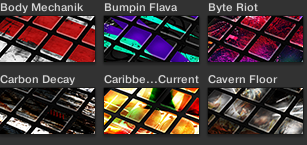In sound and music, sampling refers to the reuse of a portion (or sample’s) of a sound recording in another recording. Sample’s may include elements such as rhythm, melody, speech, or sound effects. A sample’s length can vary significantly—it might be as brief as a single musical note, like in sample-based synthesis, or it might consist of longer sections of music, such as a drumbeat or full melody. Sample’s can be manipulated in various ways: layered, equalized, sped up, slowed down, repitched, or looped. Typically, they are integrated into new works using electronic music instruments (samplers) or software such as digital audio workstations (DAWs).
The concept behind sampling has its roots in the 1940s, with the experimental genre musique concrète, where sounds were spliced and looped on tape to create new compositions. During the mid-20th century, keyboard instruments like the Mellotron emerged, using tape recordings to play sounds. The term “sampling” itself was coined in the late 1970s by the creators of the Fairlight CMI, a synthesizer that had the ability to record and playback short sounds, or sample’s. As technology advanced, more affordable standalone samplers with increased memory appeared on the market, such as the E-mu Emulator, Akai S950, and Akai MPC, making sampling more accessible to musicians.
Sampling became foundational to hip-hop music in the 1980s, with producers frequently reusing sample’s from funk and soul records, particularly drum breaks. Over time, sampling has left a significant mark on various other music genres, including electronic music and pop. Iconic sample’s such as the Amen break, the “Funky Drummer” drum break, and the orchestra hit have been reused in thousands of tracks. Artists like James Brown, Loleatta Holloway, Fab Five Freddy, and Led Zeppelin rank among the most sampled musicians in history. Notably, DJ Shadow’s 1996 album, Endtroducing, became the first album created entirely from sample’s.
However, sampling without permission can result in copyright infringement, though it may also fall under fair use in certain cases. Obtaining clearance, or permission to use a sample’s, can be a lengthy and expensive process, especially for sample’s from well-known sources. Legal rulings on the matter have varied. In cases like Grand Upright Music, Ltd. v. Warner Bros. Records Inc. (1991) and Bridgeport Music, Inc. v. Dimension Films (2005), U.S. courts ruled that any unlicensed sampling, no matter how brief, constitutes copyright infringement. However, in VMG Salsoul v. Ciccone (2016), it was determined that minimal, unlicensed sample’s were de minimis copying and did not violate copyright. Similarly, in 2019, the European Court of Justice ruled that modified, unrecognizable sample’s could be used without authorization. While some sampled artists have criticized the practice as plagiarism, many argue that sampling is a creative art form in its own right.


0 Comments